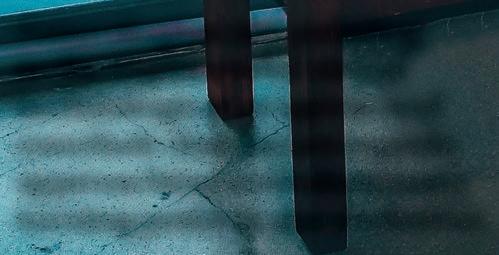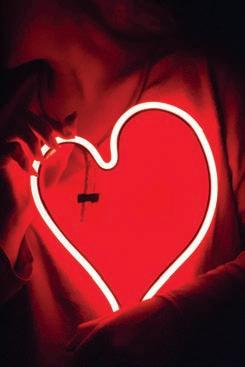
6 minute read
Health & Science

In 1903, the Wright brothers showed the world the rst sustained ight. In less than 60 years, Yuri Gagarin became the rst person in space and orbited the Earth, writes Jonny omson on Big ink.com
Advertisement
In 1993, Tim Berners-Lee made public the source code for the ‘World Wide Web’. irty years later, everything from our fridges to our watches are plugged in.
In 1953, Rosalind Franklin, James Watson, and Francis Crick discovered the doublehelix of DNA. Within 50 years, we mapped the human genome. Twenty years later, we are using CRISPR to edit DNA.
In 1992, Gary Kasparov laughed at how embarrassing his computer chess opponent was. Within ve years, he was beaten by one.
Technology has a habit of running away from us. When a breakthrough occurs or a oodgate opens, explosive, exponential growth often follows. And, according to futurologist Ray Kurzweil, we are only an historical moment away from ‘ e Singularity’. e Singularity, for Kurzweil, is de ned as “a future period during which the pace of technological change will be so rapid, its impact so deep, that human life will be irreversibly transformed”. e idea is that discovery and progress will “explode with unexpected fury”. We often fail to appreciate what “exponential growth” actually means and how rapidly it brings about change. For instance, if we were to double the processing power of a computer every year, within seven of these “doublings,” our computers’ power would have increased 128-fold. ere are more innovators and scientists today, and they have more e cient tools and methods. e conclusion that Kurzweil draws is that technological advancement is “now doubling every decade” (though he fails to cite a source for that). According to him, we are only a few decades from the point when things really take o — when we enter a breathtakingly abrupt, and completely transformed, new world.
For some, this Singularity will be a utopia.
For others, it will be a Terminator-style nightmare. Kurzweil is certainly of the former. Kurzweil sees the weakness in our human frailty, or what he calls “1.0 biological bodies”. Yes, we have Rembrandt, Newton, and Saint- Saëns, but it is also true that “much human thought is derivative, petty, and circumscribed”. Which is why the Singularity cannot come fast enough. It is time to ditch these lumbering esh-sacs of violent barbarity. e next epoch
Kurzweil sees the universe in terms of six great ‘epochs’. ey begin with physics and chemistry in creating the universe. en, carbon-based compounds became more and more intricate, until life emerged. Eventually, intelligence evolved, as did the human brain, which then allowed us to create greater and greater technology.
And so, we arrive at “our” epochal moment. e next great leap for the universe will be when humans and technology merge. is does not mean using Google Maps to nd your way home; it means that our very biology will become enmeshed with the technology we create. It is the age of bionics. As such, the machines we make will allow us to “transcend the human brain’s limitations of a mere hundred trillion extremely slow connections” and overcome “age-old human problems and vastly amplify creativity”.
It will be a transcendent, next-stage humanity with silicon in our brains and titanium in our bodies.
Whether this means an evil, god-like elite enslaving us all or some omni-pleasant idyll, Kurzweil is (uncharacteristically) unsure.
How likely is all this? What cold water might there be to throw on it? e rst idea to challenge is how likely it is that technology will progress in a way that will lead to either general arti cial intelligence or sophisticated bionic enhancements to our own minds. Most of Kurzweil’s estimates (as well as those of other futurologists like Eliezer Yudkowsky) are built on previous and existing hardware developments.
But, as philosopher David Chalmers argues” “ e biggest bottleneck on the path to AI is software, not hardware.” Having a mind, or general human intelligence, involves all manner of complicated (and unknown) neuroscienti c and philosophical questions, so “hardware extrapolation is not a good guide here”. Having a mind is a di erent kind of step altogether; it is not like doubling ash drive memory size.
Second, there is no necessary reason that there will be exponential growth of the kind futurologists depend on. Past technological advances do not guarantee similar future advances. ere is also the law of ‘diminishing returns’. It could be that even though we have more collective intelligence working more e ciently, we still get less out of it.
Apple, today, is the richest company in the world with the nest minds in computer science working for them. Yet, it is plainly obvious that the most recent iDevices seem less exciting or innovative than their previous renditions.


AI: Are we hurtling towards a point of no return?
Futurologists are pointing to the exponential rate of technological progress and conclude that we are rapidly approaching a revolutionary turning point in our evolution


Take heart, when it comes to chocs, coffee and wine
DARK chocolate is a ‘joy’ when it comes to keeping your heart healthy, co ee is likely protective, but wine is at best ‘neutral’, according to one of the world’s leading cardiologists.
As editor of the European Heart Journal for more than a decade, Prof omas Lüscher led a team that sifted through 3,200 manuscripts from scientists and doctors every year. Only a fraction – those deemed “truly novel” and backed up with “solid data” – would be selected for publication.
After stepping down from his role in charge of the world’s top cardiovascular medicine journal, Lüscher has given his verdict on one of the most frequently asked heart health research questions: are wine, chocolate and co ee good or bad for you?
Writing in the European Heart Journal, Lüscher, a consultant cardiologist and director of research, education and development at the Royal Brompton and Hare eld hospitals, says the answer is “more complex than a simple yes or no”.
Lüscher also cautions that the evidence should be considered “seriously”, given the large numbers of people worldwide that regularly enjoy a cup of co ee, a glass of wine or a piece of chocolate. ere are pros and cons to each of them, he suggests, and these can di er depending on how often and how much of each is consumed, as well as by whom.
“Are wine, chocolate, co ee forbidden joys? Well, wine is truly a joy but at best neutral when consumed in moderation.
“Chocolate is a joy for our CV [cardiovascular] system, if
consumed in dark, bitter form. And co ee? It wakes us up, less so if you drink it regularly, and at that dose of up to four cups a day, might even be protective.”
Now Luscher mainly enjoys one or two glasses at the weekend.
Prof Tim Chico, a professor of cardiovascular medicine and honorary consultant cardiologist at the University ofShe eld, said he agreed with “that the evidence suggests co ee and chocolate are associated with a slightly lower risk of heart diseases, while alcohol is not”.
Prof Paul Leeson, a professor of cardiovascular medicine at the University of Oxford, said: “When I see patients in the cardiology clinic they often assume wine, chocolate and co ee are going to be bad for them. ere is obvious relief when you tell them this may not be the case.
“ is scienti c-based nding by a respected European senior cardiologist presents a very balanced, evidencebased assessment of the associations between these three elements of life and heart disease.”











